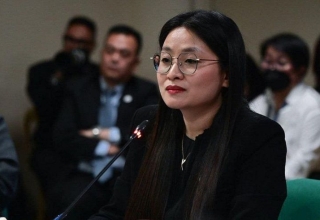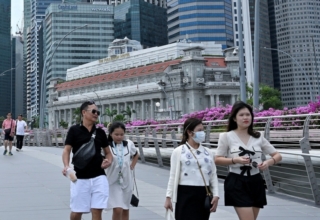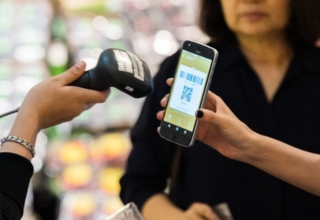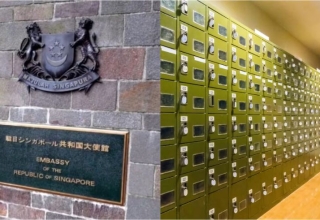
Wilfridus Ngala, the mayor of Inegena, a village in the central highlands of Ngada district on Flores Island, had a vision: to transform his town of 1,100 people, the most of whom were subsistence farmers, into an agricultural powerhouse with its own food processing plant and exports.
A year after Inegena was selected to receive support from the International Fund for Agricultural Development (IFAD, a UN agency) and Indonesia’s Ministry of Villages, Development of Disadvantaged Regions and Transmigration, there are many clear signs of progress in his community, with crops and vegetables grown in formerly barren lands, and chickens clucking along the formerly tranquil village roads.
“Our community now has a future, and many young people have opted to stay and take part in the new agriculture initiatives,” says Viktorinus Roja, who learned how to raise chickens last year and was voted president of the local enterprise association. “I was considering going to a metropolis to find job a year ago. I’ve decided, though, to give Mayor Ngala a chance.”
Inegena is one of 1,110 Indonesian villages supported by IFAD’s Integrated Village Economic Transformation Programme (TEKAD), which is jointly sponsored by the Indonesian government and the United Nations agency IFAD. Twenty communities in the district of Ngada are receiving assistance from TEKAD experts, who assist villagers in designing business plans and long-term development strategies and submitting funding applications to the 68 billion Indonesian Rupiah ($4.3 billion) national Village Fund, which is administered by the Ministry of Villages. The majority of the cash comes in the form of a loan, which the government and the communities must repay from the increased economic activity.
“Money is not often an issue in rural Indonesia.” According to Harlina Sulistroyini, the General Director of Economic Development and Investment for the Ministry of Villages, “the foundation for long-term economic success is prudent planning. Places like Inegena are evidence of what little finance and huge ideas can accomplish when combined.”
Ms. Sulistroyini says that the goal is for communities to concentrate on a specific product for which they have economic and commercial advantages. In the case of Inegena, the primary commodity and future cash crop is candlenuts, which are utilized in the cosmetics and pharmaceutical sectors as a raw ingredient.
With assistance from TEKAD, the villagers worked out a business strategy to boost candlenut gathering and initiate local processing. Until recently, each farmer picked the nuts, cleaned them by hand, and transported them to the local market; however, they now join together to negotiate higher prices with purchasers. Importantly, peasants no longer have to travel an hour to town and spend hours selling their goods; purchasers instead travel to the hamlet.
Keep Reading
Ms. Sulistroyini explains that the next phase entails the procurement, with ministry backing, of a machine to replace the manual labor necessary to peel the nuts and funding for a machine to extract the oil from the nuts.
By selling the oil rather than the nuts, the community will retain a larger share of the candlenut value chain’s profits. She adds, “We want to help villages with vision and promise. Inegena is a little community, but it will become international if they maintain their concentration.”
The residents anticipate installing the oil extraction equipment by the end of 2023, allowing them to process candlenuts collected in neighboring communities. “We intend to become a regional hub,” adds Mayor Ngala.
While the village’s economic transformation plan focuses on candlenuts, locals see potential in other products: they used Rp152 million ($9,600) from the Village Fund to increase the cultivated area of the village by 50 percent; fields formerly filled with shrubs have been converted to horticulture plantations; and the majority of the chilli, eggplants, and cabbage grown are sold at the local market.
Bonevasius Redo, a local farmer, has already extended his bamboo home with the increased revenue he received during the previous growing season. After spending several years working on an oil palm farm in Borneo, he was able to return to Inegana due to fresh prospects there. He now makes around five million Rupiahs ($320) per month, compared to only three million ($190) per month at the plantation. “We can now live here by cultivating veggies and chili peppers,” he explains.
The primary objective of the chicken project, which persuaded Mr. Roja not to migrate to the city, is to promote food security and nutrition by providing a steady protein intake to the community — in addition to generating cash from the sale of the surplus. The town currently has 2,400 chickens, up from a few hundred just two years ago.
The objective of TEKAD is to give economic transformation assistance to interested communities in Indonesia’s five poorest provinces, including East Nusa Tenggara, where Inegena is situated. By engaging and training local facilitators to interact with the villages, the initiative secures buy-in for long-term planning from the communities.
Anissa Pratiwi, Country Programme Officer at IFAD’s Jakarta office, explains, “In order to provide the groundwork for sustainable development, villages must invest in projects with long-term economic advantages, as opposed to spending the Village Fund’s money annually on ad hoc activities.” This fundamental shift in approach necessitates village-level education and capacity building.
Currently, just 10 percent of the Village Fund is used to help rural economic development, making the reform imperative. TEKAD aims to alter this by boosting the technical skills and market knowledge available to communities, as well as providing direction and monitoring for project design and execution. It is one of the UN programs in Indonesia with the broadest reach, since the communities it serves have a combined population of almost 1,6 million.
Ms. Sulistroyini explains, “We use TEKAD not just to assist the participating villages improve, but also to provide other communities in these regions a model for long-term, sustainable economic development.”


























